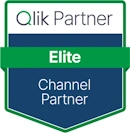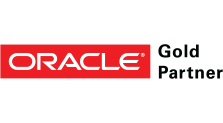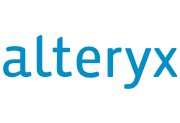Rochester Regional Health Utilises Qlik
As a newly formed health system, Rochester Regional Health (Rochester, NY) found itself using a variety of disparate systems — Crystal Reports from Epic Systems and SQL-based extracts and reports that were dumped into Excel files to extract and report data. The health system’s director of Business Intelligence, David Meintel, knew that a single, integrated solution was required, a solution that was compatible with Epic. Read more to see how Rochester Regional Health utilises Qlik.
We realized quickly that we needed to expand our toolbox for data analysis – especially on the reporting side. We needed to gain tactical wins within the organization while the EMR consolidation and data warehousing roadmaps evolved.“ David Meintel, Director, Business Intelligence, Rochester Regional Health
The Decision
The initial hurdle was figuring out what solution to use. Meintel sought something that the department could try out before buying, was easy to adopt, and had a strong track record in the Gartner Magic Quadrant. Their choice was Qlik.
After an initial trial we purchased Qlik in Q4 2015 and we anticipated 125 users to get us started. The first thing we did was use Qlik to better understand our Orthopedics Department. Once our initial goals were met, we then sought to create a Surgery Scorecard and an Emergency Department Dashboard.“ David Meintel
Epic’s History with Qlik
Of course, this wasn’t Qlik’s first foray into analysing Epic data, having signed an EMR technology partner agreement with Epic back in 2013. Many companies over the last three years have paired Qlik with Epic so Rochester Regional had more than 100 other organisations with which to consult. Most healthcare organisations largely use a combination of Qlik and Epic in order to:
- Integrate data from multiple systems and data sources
- Reduce turnaround time for reporting and analysis from days and weeks to just minutes
- Empower users to not just report, but to search, explore, discover, and analyse data
Here’s one great example (and to read all the others you can do so here) from Terry Lyons of Fairview Health Services offering up his experience:
Source: TechValidate. TVID: EA7-75D-5FC
Seeing Data More Clearly
Back to Rochester Regional Health. Previously, anecdotal evidence based on minimal data was the primary source of decision making for the Orthopedic Department. But now they had software that could coalesce multiple data sources together and allow them to make more informed decisions.
So Meintel and his team created a dashboard and scorecard that pulled data from the same sources as a number of aforementioned Epic Crystal Reports. The newly created Surgery Scorecard application allows them to evaluate physician performance within surgical service lines and highlight factors including highest patient volume and success ratio. The Orthopedic Dashboard (shown below) allows them to gain a 30,000-foot view of patient volumes, throughput and quality, with ALL of the detail to back it up. Length-of-Stay trends and pain management scores are also prominently featured: more than 140,000 pain readings in all. The dashboard can also be categorised by medication used and drill down to individual patient level if needed. But best of all: the data is refreshed daily, and goes back as far as 2014, which allows Rochester Regional Health the ability to easily spot trends.
One of the things we learned was how important it was to start small with a focused user base. When implementing a new technology, your first project has to be a win, so pick a pilot that is clearly defined, has internal champions, and that, if successful, will have measurable business results“ David Meintel
What’s Next?
In addition to expanding the data warehouse across the health system (and accruing new EMR data sources) the next step is to integrate Qlik with Epic Hyperspace. This will allow Rochester Regional Health to take action on insights. Specifically, clinicians will have access to a Launch Patient Chart button for instant patient review: no more copying and pasting Medical Record Numbers (MRNs).






